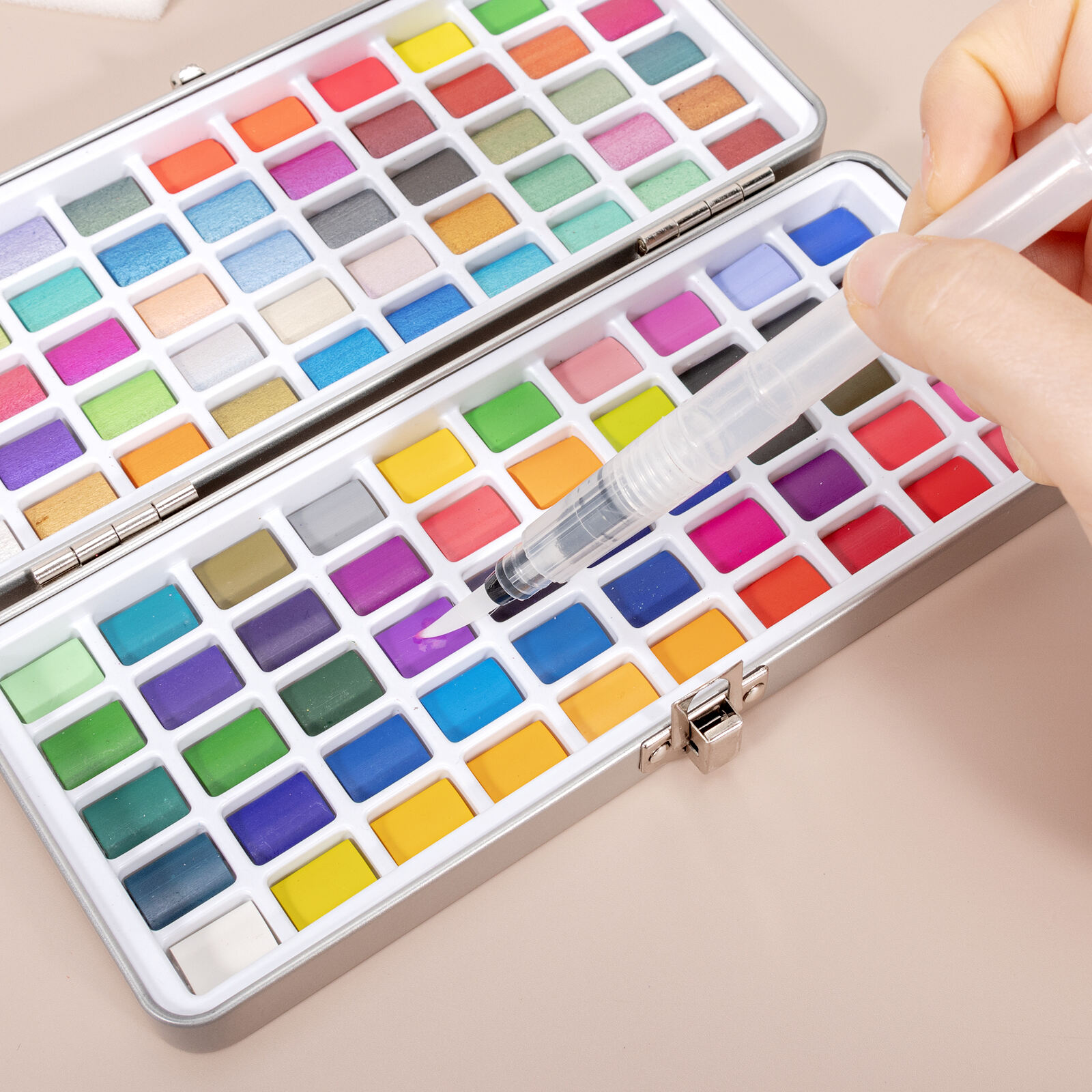Elevating Your Artistic Expression Through the Right Surface
Every stroke of pigment, every wash of color, and every blend of hue depends not only on the artist’s skill but also on the surface that supports their vision. Watercolour paper plays a vital role in shaping how techniques are executed and how results are perceived. The interaction between brush, paint, and surface can either elevate your work or impose limitations. Understanding how to choose and use the right watercolour paper is essential for artists who wish to maintain control while pushing the boundaries of their creativity.
Surface Texture and Artistic Precision
Smooth finishes for detailed illustration
Hot press watercolour paper, known for its smooth surface, is ideal for artists focused on precision and detail. The even texture allows for clean linework and subtle layering, which is particularly beneficial in botanical painting, fine illustration, and calligraphy. With less resistance on the brush or pen, the artist maintains better control and can produce clean, uninterrupted strokes.
Textured surfaces for expressive work
Cold press and rough watercolour paper offer more tooth, allowing pigment to settle into the crevices and create natural variations. These textures are perfect for artists who enjoy expressive techniques, as they encourage unpredictable effects that enhance depth and atmosphere. With textured watercolour paper, spontaneous brushwork and granulation become dynamic tools of expression.
Water Absorption and Pigment Flow
Controlled absorption for predictable results
One of the defining features of watercolour paper is its ability to manage how water is absorbed. High-quality watercolour paper absorbs just enough moisture to hold pigment without losing definition. This control supports techniques such as wet-on-dry, where artists require sharp edges and clearly defined forms. The proper paper allows artists to manipulate the timing and flow of water with confidence.
Fluid pigment dispersal for atmospheric effects
In contrast, watercolour paper that is too absorbent or not absorbent enough can hinder the desired result. Well-sized watercolour paper helps pigments disperse naturally, supporting techniques like wet-on-wet, where colors need to blend and shift fluidly. This balance enables artists to create dreamlike washes, subtle gradients, and harmonious transitions.

Layering and Reworking Capability
Strength under multiple washes
High-grade watercolour paper can withstand repeated washes, scrubbing, and layering without degradation. This durability is essential for artists who build compositions gradually. With reliable watercolour paper, there is less risk of pilling or warping, and artists can develop complexity over time without compromising the surface integrity.
Flexibility for lifting and corrections
Artists often need to lift pigment or make changes to refine their work. Quality watercolour paper supports reworking by maintaining its strength and surface texture even after adjustments. This allows greater control over highlights, shadows, and transitions, empowering the artist to revise and improve their painting as it evolves.
Color Vibrancy and Paper Tone
Enhancing brightness through paper quality
The base color and texture of watercolour paper significantly influence how pigments appear once dry. Bright white watercolour paper increases the luminosity of colors, making them appear more saturated and alive. This effect is especially important when working with transparent pigments that rely on reflected light to achieve brilliance.
Subtle warmth for muted palettes
Not all work benefits from stark white backgrounds. Some artists prefer watercolour paper with a natural or cream tone to create moodier, softer effects. These tones can enhance earth-based palettes or vintage-inspired compositions by subtly muting hues and adding warmth to the visual narrative.
Paper Weight and Structural Support
Preventing warping and distortion
Paper weight, typically measured in gsm or pounds, affects how watercolour paper responds to moisture. Heavier paper, such as 300 gsm or higher, is more resistant to warping and doesn’t require stretching before use. This stability ensures that large washes and wet techniques remain smooth and even across the painting surface.
Supporting dimensional techniques
Techniques like glazing, masking, and scraping require a durable base. High-weight watercolour paper offers the resilience needed to handle these approaches without tearing or surface fatigue. Artists can work confidently, knowing their chosen watercolour paper will support the creative demands placed upon it.
Format and Working Environment
Choosing between blocks, pads, and sheets
Watercolour paper is available in several formats that accommodate different workflows. Blocks are ideal for on-location painting since their glued edges prevent warping. Loose sheets offer flexibility for custom sizes and framing. Spiral-bound pads are convenient for sketching and practice. Selecting the right format enhances productivity and comfort during the creative process.
Surface handling and responsiveness
The tactile quality of watercolour paper contributes to the physical painting experience. Some artists prefer a softer surface for smoother brush movement, while others appreciate a slight drag for better control. Testing different textures and formats allows artists to discover how watercolour paper responds to their personal touch.
Compatibility with Tools and Mediums
Accommodating mixed media approaches
Modern watercolour techniques often incorporate pens, ink, colored pencils, and even digital transfers. Watercolour paper must be compatible with these additional media without bleeding or buckling. Papers designed for mixed media use allow artists to experiment without compromising their work.
Supporting brush variation and techniques
Brush selection affects paint flow and stroke variety, but the paper must complement these tools. Watercolour paper that offers the right balance of absorbency and tooth ensures that round, flat, or detail brushes perform optimally. Whether using a dry brush or soft mop, the paper must respond accurately to every technique.
Archival Integrity and Longevity
Preventing yellowing and brittleness
Artists expect their work to stand the test of time. High-quality watercolour paper made from 100% cotton and free from acid ensures that paintings remain vibrant and structurally sound for decades. Archival properties protect the surface from environmental damage, light exposure, and material breakdown.
Supporting framing and exhibition needs
Professional presentation often involves matting, framing, or displaying art in portfolios. Watercolour paper that resists warping and discoloration retains its appeal in both casual and formal settings. Its consistency over time allows collectors and viewers to appreciate the piece as intended, long after it was created.
Innovation in Modern Watercolour Papers
Eco-conscious production methods
The art world increasingly values sustainable practices. Many manufacturers now produce watercolour paper using eco-friendly methods, including recycled fibers, reduced chemical usage, and minimal packaging. Choosing environmentally responsible paper aligns artistic creation with environmental values.
Specialized coatings and finishes
Advancements in watercolour paper technology have introduced surfaces that enhance performance without compromising natural texture. Coatings that improve pigment lift, resist buckling, or enhance ink compatibility provide artists with new levels of control. These innovations reflect the ongoing evolution of watercolour paper to meet contemporary artistic demands.
Frequently Asked Questions
How does watercolour paper affect paint behavior?
Watercolour paper controls how paint is absorbed and spread. It influences edge definition, pigment intensity, and drying time, all of which affect technique and overall control.
Can I use regular paper for watercolour painting?
Regular paper is not designed for water-based media and often warps or tears. Watercolour paper is engineered to withstand moisture and allows for proper pigment absorption and manipulation.
What is the best weight of watercolour paper for beginners?
A weight of 300 gsm (140 lb) is a good starting point. It offers durability and minimal warping, making it ideal for learning and experimenting with various techniques.
Do all watercolour papers support reworking and lifting?
Not all watercolour papers are the same. High-quality papers with proper sizing support reworking, while cheaper alternatives may be too absorbent or fragile for repeated manipulation.
Table of Contents
- Elevating Your Artistic Expression Through the Right Surface
- Surface Texture and Artistic Precision
- Water Absorption and Pigment Flow
- Layering and Reworking Capability
- Color Vibrancy and Paper Tone
- Paper Weight and Structural Support
- Format and Working Environment
- Compatibility with Tools and Mediums
- Archival Integrity and Longevity
- Innovation in Modern Watercolour Papers
- Frequently Asked Questions


